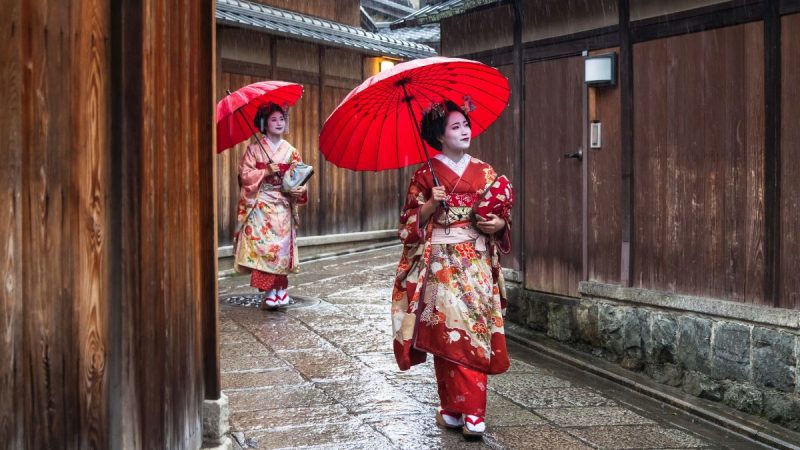Renowned worldwide as the Geisha district, Japan’s Kyoto is an ancient city steeped in history and culture. However now, visitors to Kyoto’s Geisha district of Gion will be barred from entering some alleys as Japanese officials strive to address a rapid increase in tourism.
What Makes Geisha District So Famous?
Renowned worldwide as the Geisha district, Gion embodies the essence of traditional Japanese entertainment and hospitality. However, this fame has come at a cost, as the district grapples with the challenges of over-tourism. Kyoto locals have long been irritated by misbehaving foreigners, particularly in the Gion neighbourhood of the city, which is home to teahouses where geiko (as geisha are known locally) and their young maiko pupils perform.
Gion is a historic district nestled in the heart of Kyoto, renowned for its well-preserved wooden houses, cobbled streets, and traditional tea houses. What truly sets Gion apart, however, is its association with Geisha, traditional Japanese entertainers who have mastered various traditional arts, including music, dance, and conversation. The allure of Gion lies in its ability to transport visitors back in time, offering a glimpse into a world where ancient traditions are still very much alive. The geisha tradition traces its roots back to the Edo period (1603-1868), and Gion remains one of the few places where this ancient practice continues to thrive.
Also Read: What Is Crochet Cake? Japan’s Unusual Cakes That Look Like Real Crocheted Items
Curbing Overtourism
Gion’s fame as the epicentre of geisha culture also stems from its dedication to preserving tradition. However, the surge in visitors has given rise to the challenge of over-tourism. The delicate balance between tradition and modernity is under threat as Gion grapples with the impact of its fame. Recognising the potential harm that over-tourism could inflict on Gion’s cultural heritage, the local community and authorities have taken steps to manage and regulate tourism in the districtInstances like a maiko having her kimono torn and another having a cigarette butt stuck in her collar were reported to the Japanese media. Visitors must now avoid going through small private alleys from April or beyond. There will be road signs in alleys and places where not to enter.
Lately, tourism to Japan has increased dramatically, and other popular destinations are also taking action against overtourism. Hikers taking the most well-traveled path up Mount Fuji this summer will pay $13, with a cap on the number to reduce traffic and enhance security.
As Gion grapples with the impact of its popularity, the community and authorities are taking proactive measures to strike a balance.
Cover image credits: Canva

